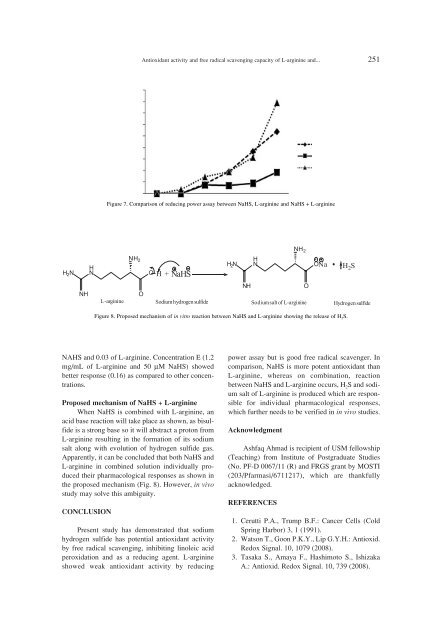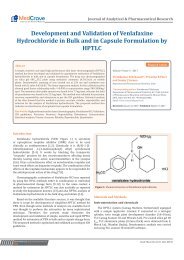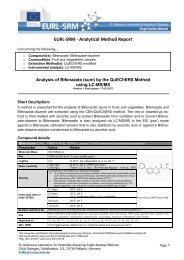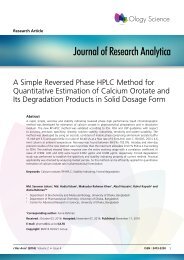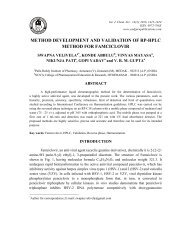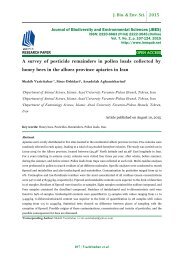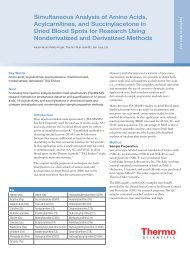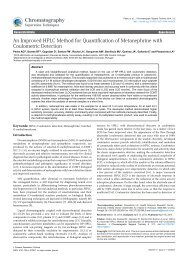acta 2_2015
acta 2_2015
acta 2_2015
- No tags were found...
You also want an ePaper? Increase the reach of your titles
YUMPU automatically turns print PDFs into web optimized ePapers that Google loves.
Antioxidant activity and free radical scavenging capacity of L-arginine and... 251Figure 7. Comparison of reducing power assay between NaHS, L-arginine and NaHS + L-arginineFigure 8. Proposed mechanism of in vitro reaction between NaHS and L-arginine showing the release of H 2 S.NAHS and 0.03 of L-arginine. Concentration E (1.2mg/mL of L-arginine and 50 µM NaHS) showedbetter response (0.16) as compared to other concentrations.Proposed mechanism of NaHS + L-arginineWhen NaHS is combined with L-arginine, anacid base reaction will take place as shown, as bisulfideis a strong base so it will abstract a proton fromL-arginine resulting in the formation of its sodiumsalt along with evolution of hydrogen sulfide gas.Apparently, it can be concluded that both NaHS andL-arginine in combined solution individually producedtheir pharmacological responses as shown inthe proposed mechanism (Fig. 8). However, in vivostudy may solve this ambiguity.CONCLUSIONPresent study has demonstrated that sodiumhydrogen sulfide has potential antioxidant activityby free radical scavenging, inhibiting linoleic acidperoxidation and as a reducing agent. L-arginineshowed weak antioxidant activity by reducingpower assay but is good free radical scavenger. Incomparison, NaHS is more potent antioxidant thanL-arginine, whereas on combination, reactionbetween NaHS and L-arginine occurs, H 2 S and sodiumsalt of L-arginine is produced which are responsiblefor individual pharmacological responses,which further needs to be verified in in vivo studies.AcknowledgmentAshfaq Ahmad is recipient of USM fellowship(Teaching) from Institute of Postgraduate Studies(No. PF-D 0067/11 (R) and FRGS grant by MOSTI(203/Pfarmasi/6711217), which are thankfullyacknowledged.REFERENCES1. Cerutti P.A., Trump B.F.: Cancer Cells (ColdSpring Harbor) 3, 1 (1991).2. Watson T., Goon P.K.Y., Lip G.Y.H.: Antioxid.Redox Signal. 10, 1079 (2008).3. Tasaka S., Amaya F., Hashimoto S., IshizakaA.: Antioxid. Redox Signal. 10, 739 (2008).


